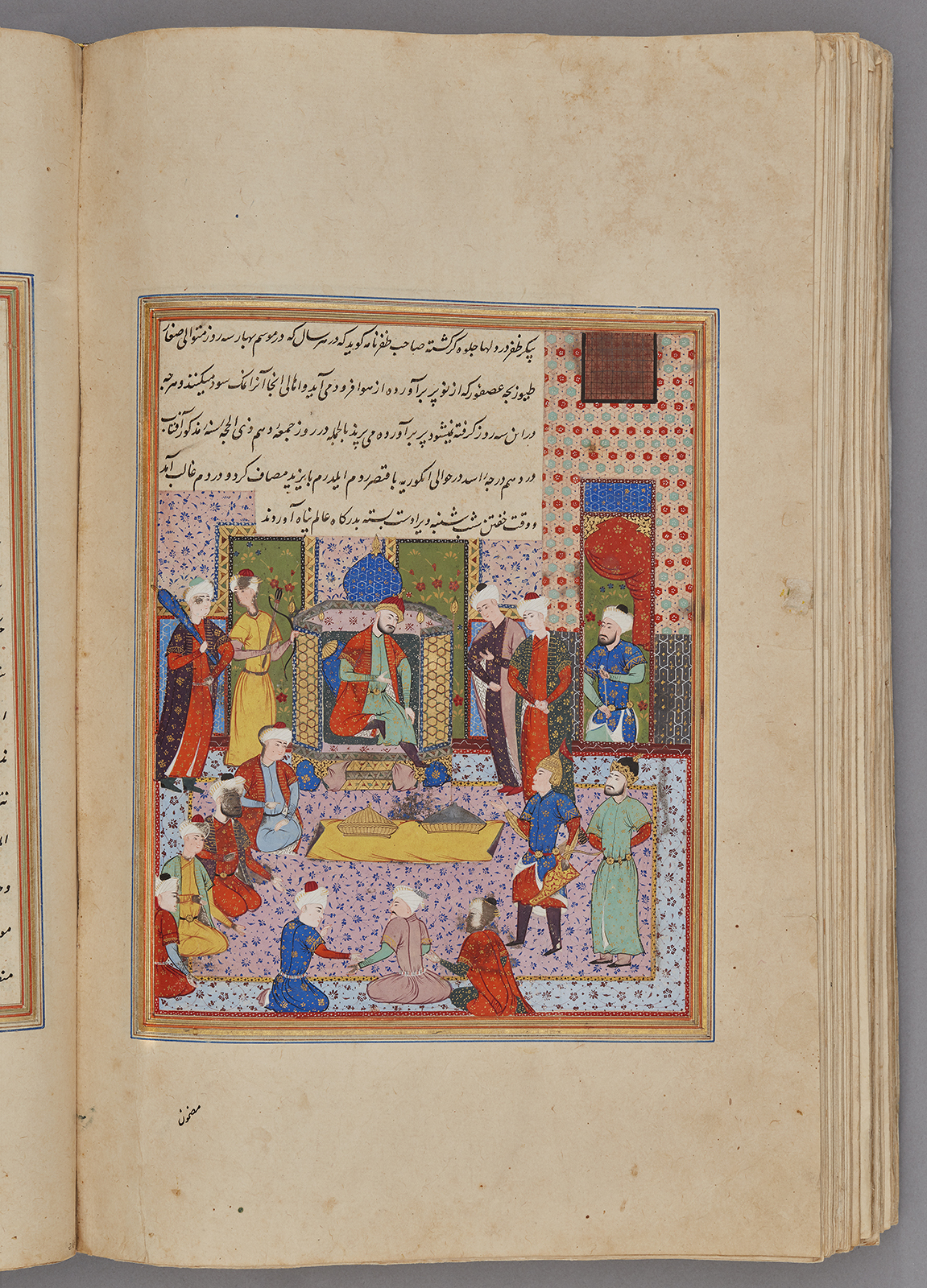Click on the image to zoom
Timur consulting before his campaign to Anatolia, Folio from a manuscript of Nigaristan
- Accession Number:AKM272.f284v
- Creator:Author: Ahmad b. Muhammad Ghaffari, Persian, died 1567 Scribe: Ahmad al-Shirazi
- Place:Iran, Shiraz (probably)
- Dimensions:38.7 cm × 25 cm × 6.4 cm
- Date:1573-74 CE/980 AH/AH 980
- Materials and Technique:Ink, opaque watercolour, and gold on paper
The miniature painting "Timur consulting before his campaign to Anatolia" is from an intact manuscript of Kitab-i Nigaristan, a collection of anecdotes and historical incidents written in prose by the historian and scholar Ahmad Muhammad Ghaffari (1504–1567/68) of Kashan in 1551–2. This illustrated manuscript, dated 1573, was probably produced in a Shiraz workshop.
See AKM272 for more information about the manuscript and links to the other illustrations.
Further Reading
This illustration takes the pictorial theme of the audience scene, showing an interior with a ruler on his throne in the centre of the image. The figures are arranged both sitting and standing diagonally around this figure.
Similar to other interior illustrations in the Nigaristan, this image depicts the interior of a room and the façade of that room. Most interior scenes also use the same spatial division. Here, the main room is situated below the large text box. However, this illustration is unusual for having a single text box.
The text indicates that this scene is the prelude to Timur's Anatolian campaign. Timur, also known as Tamerlan or Tamerlane (1336–1405), was the Turko-Mongol conqueror and founder of the Timurid dynasty that endured into the 16th century. The text notes there is a threat of resentment among the commander's troops prior to the campaign: the preparatory work has been physically taxing, and there is much uncertainty as to the outcome. Timur tries to counter such concerns by talking to his trusted consultants and also by consulting the astrologers. These astrologers provide a favourable horoscope for the planned date of the venture, and so even the last fears are quelled. The campaign proves to be victorious for Timur, just as it was written in the stars.
Court scenes such as these, where a crowned figure sits enthroned, are among the favourite types of scenes depicted in miniature painting. The throne can be in a flourishing landscape or in an interior, depending on the context of the illustration. An interior court scene is usually supplemented by other figures such as servants and musicians.
- Elika Palenzona-Djalili
References
Nagel, Tilman. Timur der Eroberer und die Islamische Welt des späten Mittelalters. München: C.H. Beck Verlag, 1993. ISBN: 9783406371714
Sims, Eleanor. Peerless Images: Persian Painting and Its Sources. New Haven and London: Yale University Press, 2002. ISBN: 9780300090383
Note: This online resource is reviewed and updated on an ongoing basis. We are committed to improving this information and will revise and update knowledge about this object as it becomes available.


